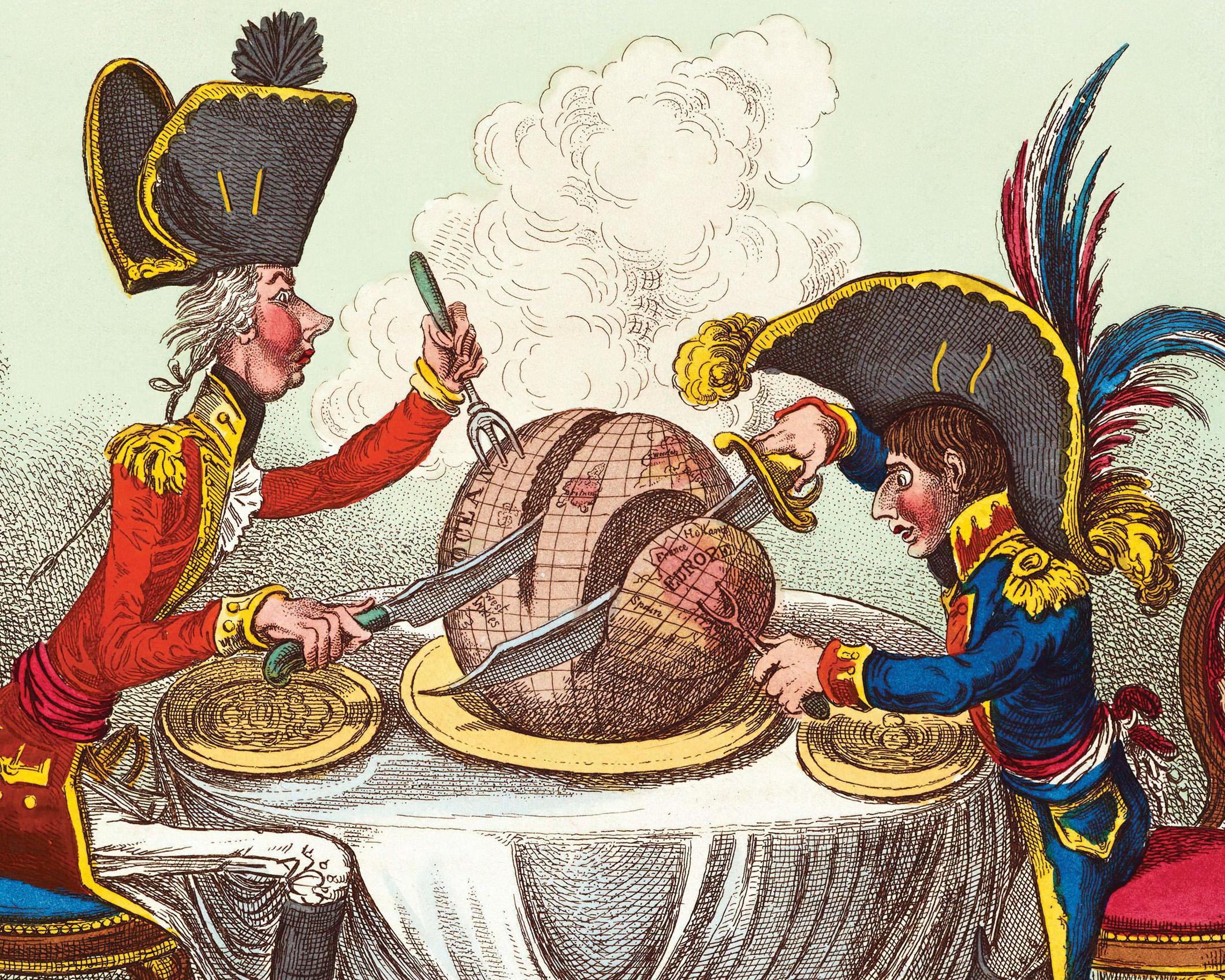
AN article takes time to read, but a picture speaks to us instantly. In the 18th century, William Hogarth campaigned pictorially against idleness, cruelty and drink and Thomas Rowlandson invented comical strips. But it was after 1805, when James Gillray depicted a small, ravening Napoleon carving up the world with William Pitt, that the cartoon— a distillation of news, character and opinion —became a feature of English life. The English tend to laugh at authority rather than rush to the barricades. Hypocrisy, dishonesty, and incompetence are all vulnerable. In unhappy lands where tyrants rule, cartoonists are suppressed, but here, they have thrived.
Napoleon once said that Gillray did him more damage than a dozen generals and ordered anti-English cartoons be drawn in retaliation. However, Gillray struck domestic targets, too, printing entertainingly rude colour pictures of the Prince of Wales—‘a voluptuary under the horrors of digestion’—and of Pitt, vomiting and excreting money in an early version of quantitative easing.
Punch cartoons—infrequently humorous and never scatological—dominated the 19th century. Elaborate allegorical caricatures— many by John Tenniel (illustrator of Alice’s Adventures in Wonderland)—alerted the nation, in anger or in awe, to significant events: a British Lion avenging the Indian Mutiny; society’s foolish ridicule of Darwin (often drawn as simian); Disraeli beguiling Queen Victoria with an Oriental crown. War clouds gathered, but Punch continued unchanged, as with Bernard Partridge’s 1914 German officer standing over a Belgian family he had shot.
Bu hikaye Country Life UK dergisinin October 05, 2022 sayısından alınmıştır.
Start your 7-day Magzter GOLD free trial to access thousands of curated premium stories, and 9,000+ magazines and newspapers.
Already a subscriber ? Giriş Yap
Bu hikaye Country Life UK dergisinin October 05, 2022 sayısından alınmıştır.
Start your 7-day Magzter GOLD free trial to access thousands of curated premium stories, and 9,000+ magazines and newspapers.
Already a subscriber? Giriş Yap

Give it some stick
Galloping through the imagination, competitive hobby-horsing is a gymnastic sport on the rise in Britain, discovers Sybilla Hart

Paper escapes
Steven King selects his best travel books of 2024

For love, not money
This year may have marked the end of brag-art’, bought merely to show off one’s wealth. It’s time for a return to looking for connoisseurship, beauty and taste

Mary I: more bruised than bloody
Cast as a sanguinary tyrant, our first Queen Regnant may not deserve her brutal reputation, believes Geoffrey Munn

A love supreme
Art brought together 19th-century Norwich couple Joseph and Emily Stannard, who shared a passion for painting, but their destiny would be dramatically different

Private views
One of the best ways-often the only way-to visit the finest privately owned gardens in the country is by joining an exclusive tour. Non Morris does exactly that

Shhhhhh...
THERE is great delight to be had poring over the front pages of COUNTRY LIFE each week, dreaming of what life would be like in a Scottish castle (so reasonably priced, but do bear in mind the midges) or a townhouse in London’s Eaton Square (worth a king’s ransom, but, oh dear, the traffic) or perhaps that cottage in the Cotswolds (if you don’t mind standing next to Hollywood A-listers in the queue at Daylesford). The estate agent’s particulars will give you details of acreage, proximity to schools and railway stations, but never—no, never—an indication of noise levels.

Mission impossible
Rubble and ruin were all that remained of the early-19th-century Villa Frere and its gardens, planted by the English diplomat John Hookham Frere, until a group of dedicated volunteers came to its rescue. Josephine Tyndale-Biscoe tells the story

When a perfect storm hits
Weather, wars, elections and financial uncertainty all conspired against high-end house sales this year, but there were still some spectacular deals

Give the dog a bone
Man's best friend still needs to eat like its Lupus forebears, believes Jonathan Self, when it's not guarding food, greeting us or destroying our upholstery, of course